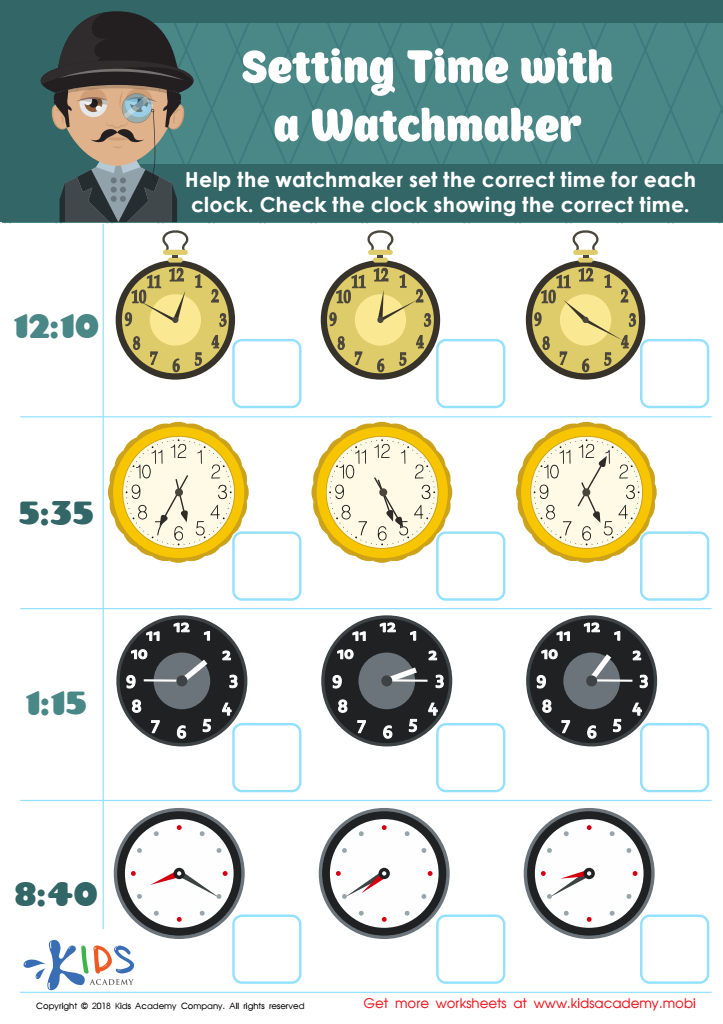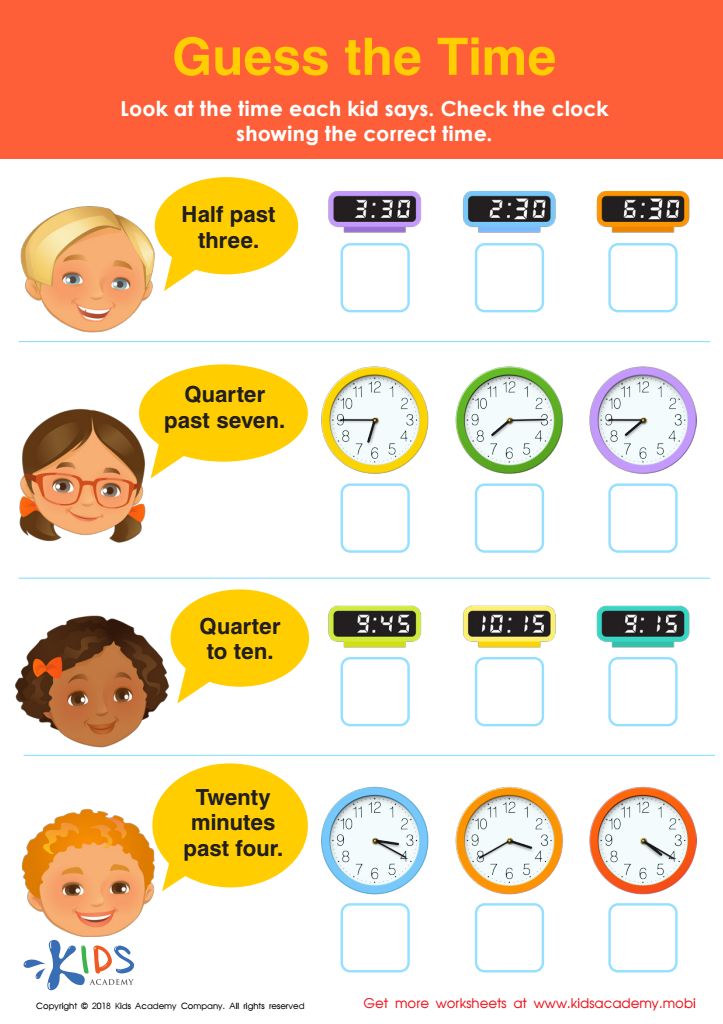Time recognition Normal Math Worksheets for Ages 8-9
3 filtered results
-
From - To
Enhance your child's understanding of time with our Time Recognition Normal Math Worksheets for Ages 8-9! Designed to reinforce essential time-telling skills, these worksheets incorporate engaging activities that help students learn to read analog and digital clocks, understand time intervals, and solve real-life time problems. Perfect for classroom use or at-home learning, our worksheets provide a mix of exercises that cater to varying levels of proficiency. Foster your child's confidence and accuracy in time management while making learning fun! Explore our collection today and unlock key concepts in time recognition that will benefit them for years to come.


Setting Time with Watchmaker Worksheet


Guess the Time Worksheet


Time to Catch the Train Part 2 Worksheet
Time recognition is a foundational math concept crucial for children aged 8-9. At this stage, students are not just learning to tell time but also to understand its significance in daily life. Mastering time informs their ability to manage schedules, build routines, and develop time-management skills, which are vital as they grow older.
When parents and teachers prioritize time recognition, they equip children with more than just the ability to read a clock; they help them build practical life skills. Understanding time allows children to plan their day efficiently, gauge the duration of activities, and anticipate transitions, which supports emotional well-being and reduces anxiety associated with uncertainty.
In educational settings, integrating time-related activities into math curriculum encourages critical thinking and problem-solving. It enhances cognitive development and aids in grasping complex time concepts such as elapsed time, which are important for future math learning.
Moreover, as children become more proficient in time management, it nurtures a sense of responsibility and independence. Both parents and teachers play a key role in reinforcing these skills through everyday conversations, reinforcing classroom lessons at home, and encouraging children to engage in time-based tasks—helping ensure they are prepared for more advanced math challenges ahead.
 Assign to My Students
Assign to My Students


.jpg)




%20(1).jpg)








